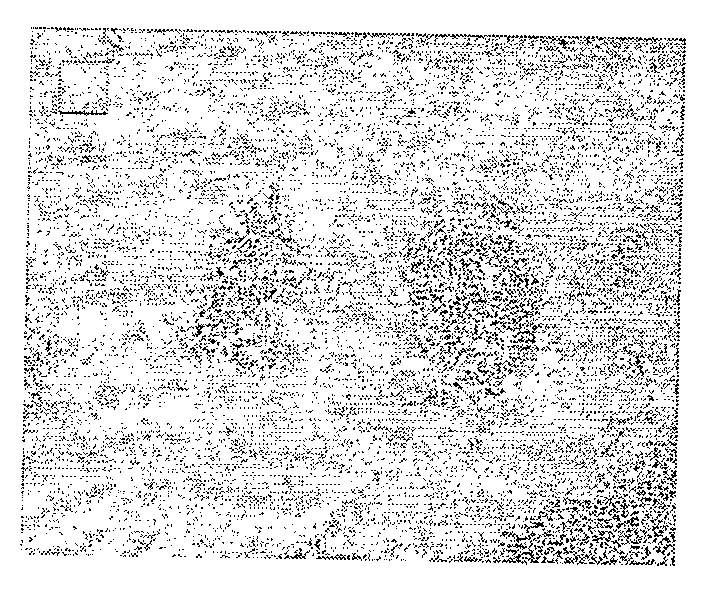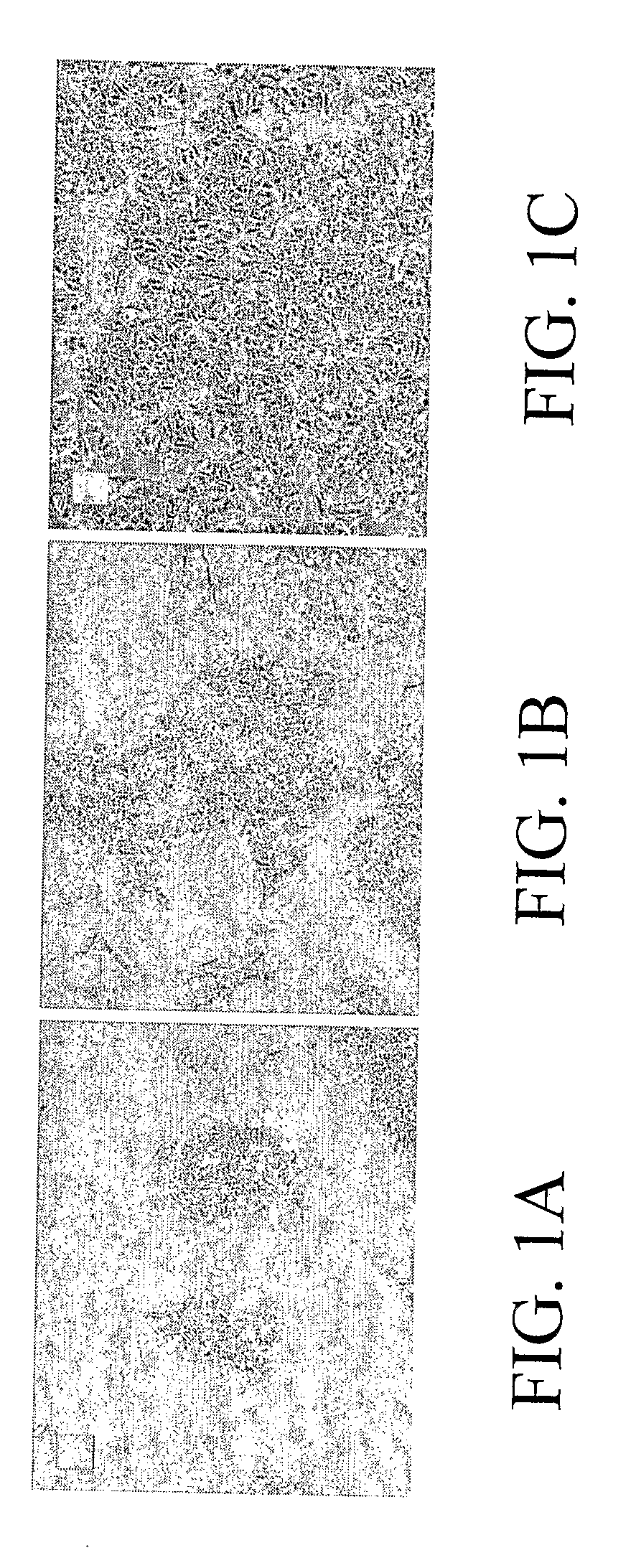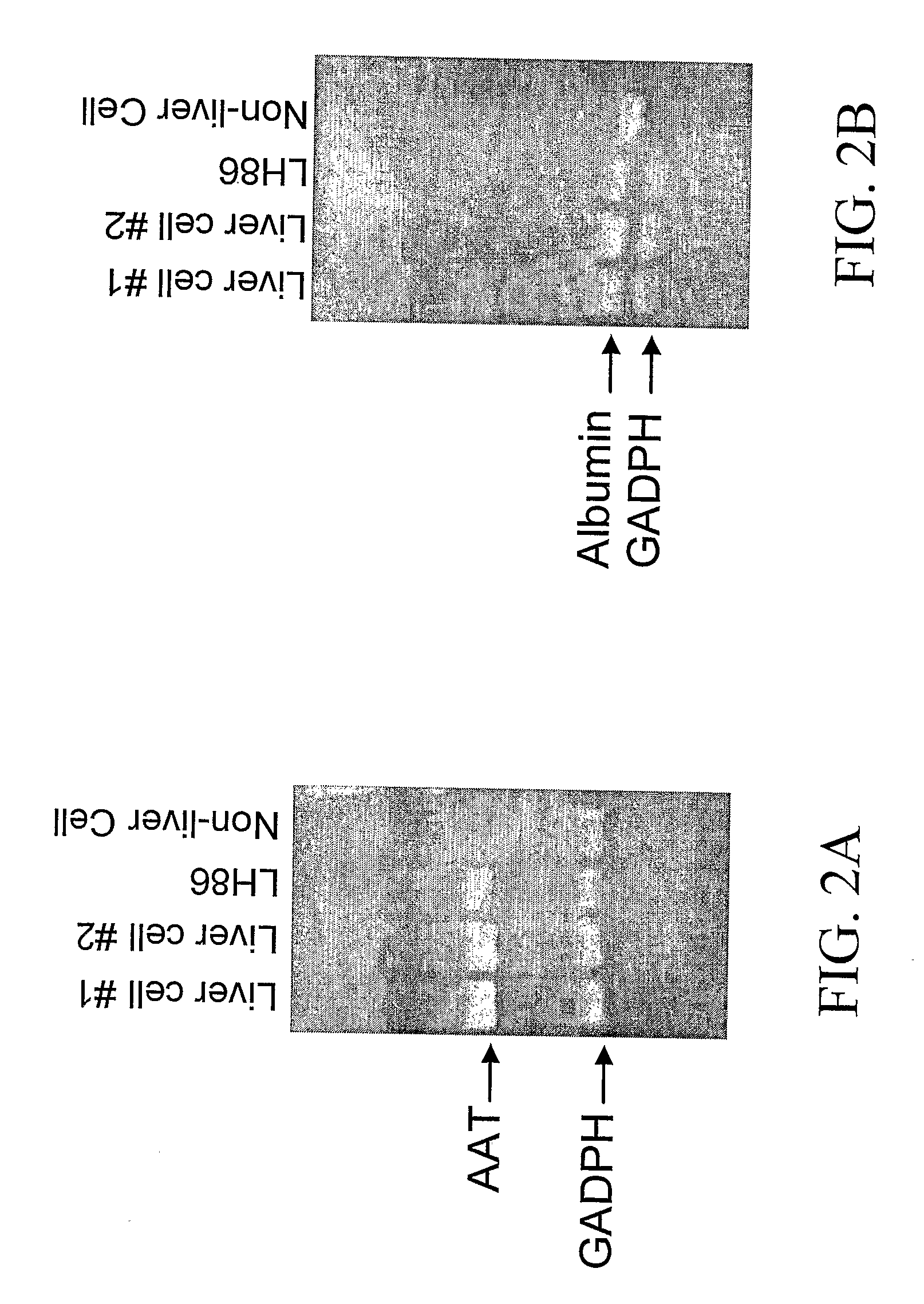Human Liver Cancer Cell Line
a liver cancer and cell line technology, applied in the field of human liver cancer cell line, can solve the problems of insufficient culture techniques for maintaining hepatocytes, insufficient establishment of replicative cultures of adult human hepatocytes, and difficult acquisition of normal human hepatocytes
- Summary
- Abstract
- Description
- Claims
- Application Information
AI Technical Summary
Benefits of technology
Problems solved by technology
Method used
Image
Examples
example 1
LH86 Cells have a Distinctive Morphology
[0099]One hepatoma cell line, referred to as LH86, was derived from a patient who has no history of chronic liver diseases or viral infection. The derived cell line, LH86, exhibits a morphology that is distinct from currently existing human hepatoma cell lines, such as Huh7 and HepG2 (FIGS. 1A-1C). The cells form thickened cell cords (more than three-cell layers), resembling thickened liver plates in the original tumor tissue. The cells have a doubling time of approximately 42 hours in the presence of 10 ng / mL EGF.
example 2
LH86 Cell Line Expresses Liver-Specific Gene Products
[0100]Cells of the LH86 cell line produce abundant human albumin and alpha-1 antitrypsin, which are liver-specific gene products (FIGS. 2A-2B). It appears that the cell line represents a well-differentiated hepatocellular carcinoma. The LH86 cell line has the following HLA genotype: A24 / A25, B07.
example 3
LH86 Cells are Susceptible to HCV and HBV Infection
[0101]The present inventors tested the susceptibility of the LH86 cell line to HCV-JFH1 released from Huh7.5 cells. As shown in FIG. 3A-3B and FIG. 4, the cells can be infected by the virus. The present inventors also transfected the cells with HCV-JFH1 RNA transcribed from plasmid pJFH1. It was found that viral particles were released from the cell line and these particles are also infectious to both Huh7.5 cells and LH86 cells. Unexpectedly, however, after 5-6 days of infection, most of the LH86 cells had died. DAPI staining showed that cells underwent nuclear fragmentation, a feature of cell apoptosis (FIG. 5). The viral cytopathic effects were completely inhibited when the cells were pre-treated with 100 U / mL IFN. Infection of Huh7.5 cells did not show overt cytopathic effects, consistent with findings from other groups (Zhong et al., PNAS, 2005, 102(26):9294-9299; Cai Z. et al., J. Virol., 2005, 79:13963-13973).
PUM
| Property | Measurement | Unit |
|---|---|---|
| temperatures | aaaaa | aaaaa |
| temperatures | aaaaa | aaaaa |
| molecular weight | aaaaa | aaaaa |
Abstract
Description
Claims
Application Information
 Login to View More
Login to View More - R&D
- Intellectual Property
- Life Sciences
- Materials
- Tech Scout
- Unparalleled Data Quality
- Higher Quality Content
- 60% Fewer Hallucinations
Browse by: Latest US Patents, China's latest patents, Technical Efficacy Thesaurus, Application Domain, Technology Topic, Popular Technical Reports.
© 2025 PatSnap. All rights reserved.Legal|Privacy policy|Modern Slavery Act Transparency Statement|Sitemap|About US| Contact US: help@patsnap.com



